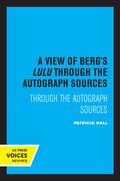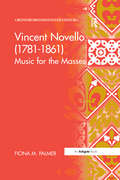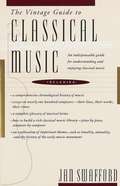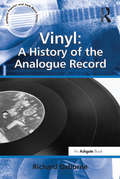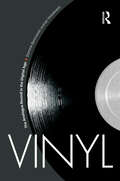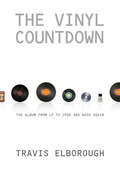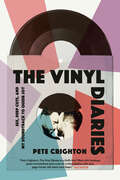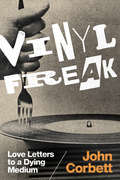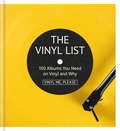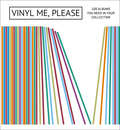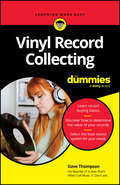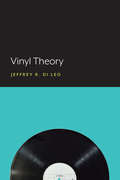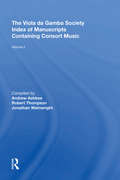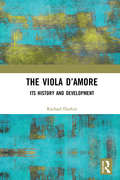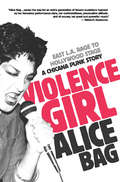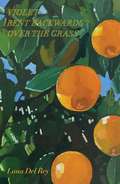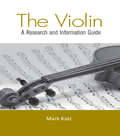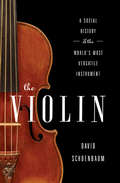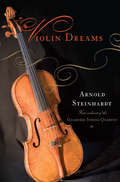- Table View
- List View
A View of Berg's Lulu: Through the Autograph Sources
by Patricia HallAfter 50 years of analysis we are only beginning to understand the quality and complexity of Alban Berg's most important twelve-tone work, the opera Lulu. Patricia Hall's new book represents a primary contribution to that understanding—the first detailed analysis of the sketches for the opera as well as other related autograph material and previously inaccessible correspondence to Berg. In 1959, Berg's widow deposited the first of Berg's autograph manuscripts in the Austrian National Library. The complete collection of autographs for Lulu was made accessible to scholars in 1981, and a promising new phase in Lulu scholarship unfolded. Hall begins her study by examining the format and chronology of the sketches, and she demonstrates their unique potential to clarify aspects of Berg's compositional language. In each chapter Hall uses Berg's sketches to resolve a significant problem or controversy that has emerged in the study of Lulu. For example, Hall discusses the dramatic symbolism behind Berg's use of multiple roles and how these roles contribute to the large-scale structure of the opera. She also revises the commonly held view that Berg frequently invoked a free twelve-tone style. Hall's innovative work suggests important techniques for understanding not only the sketches and manuscripts of Berg but also those of other twentieth-century composers. This title is part of UC Press's Voices Revived program, which commemorates University of California Press’s mission to seek out and cultivate the brightest minds and give them voice, reach, and impact. Drawing on a backlist dating to 1893, Voices Revived makes high-quality, peer-reviewed scholarship accessible once again using print-on-demand technology. This title was originally published in 1996.
Villager Jim's Moorland Wildlife
by Villager JimVillager Jim, the famous Peak District photographer, takes us on a journey to his very favorite places on the moors surrounding the Peak District National Park, where he lives. From wonderful wild deer to breathtaking buzzards and other birds of prey, Jim allows us a glimpse of his daily moorland travels with all the abundant wildlife that lives in that part of the world. Jim often concedes that it is his most favorite place on earth, being out alone with his camera within this unforgiving landscape, watching the sun rise on the horizon, whilst at the same time, seeing stags wander, grazing on the moorland. It is here also that many of his favorite birds of prey abound. And, of course, he is there to capture the beautiful landscape shots rolling in mists or washed in the golden light of dawn.
Vincent Novello: Music for the Masses (Music in Nineteenth-Century Britain)
by Fiona M. PalmerToday Vincent Novello (1781-1861) is remembered as the father of the music-publishing firm. Fiona Palmer's evaluation of Novello the man and the musician in the marketplace draws on rich primary sources. It is the first to provide a rounded view of his life and work, and the nature of his importance both in his own time and to posterity. Novello's early musical training, particularly his experience of music-making in London's embassy chapels, influenced him profoundly. His practical experience as director of music at the Portuguese Embassy Chapel in Mayfair informed his approach to editing and arranging. Fundamental moral and social attitudes underpinned Novello's progress. Ideas on religion, education and the function of family and friendship within society shaped his life choices. The Novello family lived in turbulent times and was widely-read, discussing politics and religion and not only the arts at its social gatherings. Within Vincent and Mary Novello's close circle were radical thinkers with republican views - such as Leigh Hunt and Charles Cowden Clarke - who saw sociability as a means of reorganizing society. Thematic studies focus on Novello as practical musician and educator, as editor, and as composer. His connections with institutions such as the Covent Garden and Pantheon Theatres, the Philharmonic Society and Moorfields Chapel, together with his adjudicating and teaching activities, are examined. In his wide-ranging editorial work Novello found his true vocation positioning himself as preservationist, pioneer and philanthropist. His work as composer, though unremarkable in quality, mirrored the demands and expectations of his consumers. Novello emerges from this study as a visionary who single-mindedly pursued greater musical knowledge for the benefit of everyone.
Vincenzo Bellini: A Guide to Research (Routledge Music Bibliographies)
by Stephen WillierThis comprehensive bibliography and research guide details all the works currently available on Vincenzo Bellini, the Italian opera composer best known for his work Norma, which is still regularly performed today at Covent Garden and by regional opera companies. 2001, the bicentennial anniversary of Bellini's death, saw several concerts and recordings of his work, raising his academic profile. This volume aims to meet the research needs of all students of Bellini in particular.
The Vintage Guide to Classical Music: An Indispensable Guide for Understanding and Enjoying Classical Music
by Jan Swafford<p>The most readable and comprehensive guide to enjoying over five hundred years of classical music -- from Gregorian chants, Johann Sebastian Bach, and Wolfgang Amadeus Mozart to Johannes Brahms, Igor Stravinsky, John Cage, and beyond. <p>The Vintage Guide to Classical Music is a lively -- and opinionated -- musical history and an insider's key to the personalities, epochs, and genres of the Western classical tradition. Among its features: <p> <li>chronologically arranged essays on nearly 100 composers, from Guillaume de Machaut (ca. 1300-1377) to Aaron Copland (1900-1990), that combine biography with detailed analyses of the major works while assessing their role in the social, cultural, and political climate of their times; <li>informative sidebars that clarify broader topics such as melody, polyphony, atonality, and the impact of the early-music movement; <li>a glossary of musical terms, from a cappella to woodwinds; <li>a step-by-step guide to building a great classical music library.</li> <p> <p>Written with wit and a clarity that both musical experts and beginners can appreciate, The Vintage Guide to Classical Music is an invaluable source-book for music lovers everywhere.</p>
Vinyl: A History Of The Analogue Record (Ashgate Popular and Folk Music Series)
by Richard OsborneVinyl: A History of the Analogue Record is the first in-depth study of the vinyl record. Richard Osborne traces the evolution of the recording format from its roots in the first sound recording experiments to its survival in the world of digital technologies. This book addresses the record's relationship with music: the analogue record was shaped by, and helped to shape, the music of the twentieth century. It also looks at the cult of vinyl records. Why are users so passionate about this format? Why has it become the subject of artworks and advertisements? Why are vinyl records still being produced? This book explores its subject using a distinctive approach: the author takes the vinyl record apart and historicizes its construction. Each chapter explores a different element: the groove, the disc shape, the label, vinyl itself, the album, the single, the b-side and the 12" single, and the sleeve. By anatomizing vinyl in this manner, the author shines new light on its impact and appeal.
Vinyl: The Analogue Record in the Digital Age
by Ian Woodward Dominik BartmanskiRecent years have seen not just a revival, but a rebirth of the analogue record. More than merely a nostalgic craze, vinyl has become a cultural icon. As music consumption migrated to digital and online, this seemingly obsolete medium became the fastest-growing format in music sales. Whilst vinyl never ceased to be the favorite amongst many music lovers and DJs, from the late 1980s the recording industry regarded it as an outdated relic, consigned to dusty domestic corners and obscure record shops. So why is vinyl now experiencing a ‘rebirth of its cool’?Dominik Bartmanski and Ian Woodward explore this question by combining a cultural sociological approach with insights from material culture studies. Presenting vinyl as a multifaceted cultural object, they investigate the reasons behind its persistence within our technologically accelerated culture. Informed by media analysis, urban ethnography and the authors’ interviews with musicians, DJs, sound engineers, record store owners, collectors and cutting-edge label chiefs from a range of metropolitan centres renowned for thriving music scenes including London, New York, Tokyo, Melbourne, and especially Berlin, what emerges is a story of a modern icon.
Vinyl Age: A Guide to Record Collecting Now
by Max BrzezinskiFrom Carolina Soul Records, one of the world's largest online record sellers, comes the definitive guide to every aspect of record collecting in the digital era. Any music fan knows that there's nothing like the tactile pleasure of a record. Even with access to a variety of streaming services, digital technology has paved the way for the analog revival; from multiplatinum megahits to ultra-obscure private presses, millions of records are available for purchase from all over the world. Vinyl Age is the ultimate post-internet guide to record collecting.Written by Max Brzezinski of Carolina Soul Records, one of the world's largest high-end record dealers, Vinyl Age combines an engaging narrative and incisive analysis to reveal the joys and explain the complexities of the contemporary vinyl scene. Brzezinski demystifies the record game and imparts the skills essential to modern record digging -- how to research, find, buy, evaluate, and understand vinyl in the twenty-first century.
The Vinyl Countdown: The Album from LP to iPod and Back Again
by Travis ElboroughVINYL MAY BE FINAL NAIL IN CD’S COFFIN ran the headline in a Wired magazine article in October 2007.Ever since the arrival of the long-playing record in 1948, the album has acted as the soundtrack to our lives. Record collections-even on a CD or iPod-are personal treasures, revealing our loves, errors in judgment, and lapses in taste.In The Vinyl Countdown, Travis Elborough explores the way in which particular albums are deeply embedded in cultural history or so ubiquitous as to be almost invisible. While music itself has experienced several different movements over the past sixty years, the album has remained a constant. But the way we listen to music has changed in the last ten years. In the age of the iPod, when we can download an infinite number of single tracks instantaneously, does the concept of the album mean anything?Elborough moves chronologically through relevant periods, letting the story of the LP, certain genres, youth cults, and topics like sleeve designs, shops, drugs, and education unfurl as he goes along. The Vinyl Countdown is a brilliant piece of popular history, an idiosyncratic tribute to a much-loved part of our shared consciousness, and a celebration of the joy of records.
The Vinyl Diaries: Sex, Deep Cuts, and My Soundtrack to Queer Joy
by Pete CrightonA poignant, funny, and lively memoir of sexual awakening, music, and discovering one's true self. Pete Crighton came of age in the early/mid 1980s in the shadow of HIV/AIDS. Growing up in Toronto, he was terrified that his friends and schoolmates would find out that he was &“different&” at a time when being gay felt like a death sentence. His only comfort was music, the songs a balm to his painful adolescence. Struggling to make sense of his sexuality and fear of the disease stifled Crighton as a sexual being. Instead of exploring sex, he began curating a massive music library. He then took what he thought was a safe path and entered into two long-term monogamous relationships, both doomed to fail. Finally, in his 40s, Crighton decided to ignore his fear and live his queer life to the fullest.The Vinyl Diaries is the story of Crighton&’s mid-life sexual awakening. From one-night trysts to friendships resulting from app-based hookups, Crighton is honest and unapologetic as he chronicles the pursuit of his erotic desires. Each new connection and lover is linked to an artist, song, or album from his vast collection and backdrops the stories Crighton tells about his life, interconnected with the artists' work and histories. Kate Bush, the B-52s, Prince, The Smiths, Yoko Ono, and Stevie Nicks are just a few of the artists who provide an extraordinary soundtrack to Crighton&’s adventures.Big-hearted, funny, thoughtful, and wildly entertaining, The Vinyl Diaries is a celebration of sex, music and the discovery of our true selves.
Vinyl Freak: Love Letters to a Dying Medium
by John CorbettFrom scouring flea markets and eBay to maxing out their credit cards, record collectors will do just about anything to score a long-sought-after album. In Vinyl Freak, music writer, curator, and collector John Corbett burrows deep inside the record fiend’s mind, documenting and reflecting on his decades-long love affair with vinyl. Discussing more than 200 rare and out-of-print LPs, Vinyl Freak is composed in part of Corbett's long-running DownBeat magazine column of the same name, which was devoted to records that had not appeared on CD. In other essays where he combines memoir and criticism, Corbett considers the current vinyl boom, explains why vinyl is his preferred medium, profiles collector subcultures, and recounts his adventures assembling the Alton Abraham Sun Ra Archive, an event so all-consuming that he claims it cured his record-collecting addiction. Perfect for vinyl newbies and veteran crate diggers alike, Vinyl Freak plumbs the motivations that drive Corbett and collectors everywhere.
Vinyl Me, Please: 100 Albums You Need on Vinyl and Why
by Vinyl Me, PleasePutting the style in your stylus, Vinyl Me, Please is more than your average book of music recommendations. Brought to you by the vinyl subscription club of the same name - 'the best damn record club there is'* - Vinyl Me, Please is a lively, visually handsome guide to the 100 albums you need to own on vinyl and why, with added extras: cocktail recipes to match your listening needs, and 'Like this, then listen to this' suggestions.With Vinyl Me, Please, your record collector needs are in safe hands: arranged alphabetically, this chic tome is your font of knowledge on what sounds work best on vinyl, while it also simultaneously captures the aesthetic thrills that crate-diggers derive from their passion. *If they do say so themselves.
Vinyl Me, Please: 100 Albums You Need in Your Collection
by Vinyl Me PleaseThe music experts at the beloved vinyl subscription service share 100 essential albums—from iconic classics to hidden gems—in this collector’s guide.Brought to you by the subscription club of the same name, Vinyl Me, Please is a vibrant visual guide to curating must-have records for any music lover’s shelf. Celebrating artists as varied and influential as Bikini Kill, Aretha Franklin, Wilco, and beyond, each entry includes an album’s artwork, a short essay from a contributing music writer, and further suggestions to help you expand your taste and build your collection. This comprehensive compendium even includes cocktail recipes to pair perfectly with your listening experience. Essential for both new collectors and die-hard wax-spinners, Vinyl Me, Please revels in the album as art form and exudes the style, expertise, and passion that all crate-diggers share.
Vinyl Record Collecting For Dummies
by Dave ThompsonGet on the vinyl train and learn about this captivating hobby Vinyl Record Collecting For Dummies teaches you how to start a collection, grow your collection, and make that collection sound excellent. You’ll learn how to shop for new, used, and rare records, and how to select the turntable that’s right for you. Learn how to determine a record’s value, build your collection on a budget, and properly store and maintain your records. This handy Dummies guide also gives you the background knowledge you’ll need to hold your own in conversations with vinyl enthusiasts—all about music genres, the pros and cons of vinyl types, how records are made, and even the history of record collecting itself. Now you can start collecting rare records, new releases, and everything in between. Learn the basics of buying records at record shops, secondhand stores, and online Determine the value of your collection and learn how to recognize great deals Select the turntable and sound system that are right for your needs Explore the history of recorded music and learn why people are going wild for vinyl This is the perfect Dummies guide for anyone who’s ready to get swept up in the excitement of collecting vinyl records, including beginners and seasoned collectors.
Vinyl Theory
by Jeffrey R. Di LeoWhy are vinyl records making a comeback? How is their resurgence connected to the political economy of music? Vinyl Theory responds to these and other questions by exploring the intersection of vinyl records with critical theory. In the process, it asks how the political economy of music might be connected with the philosophy of the record. The young critical theorist and composer Theodor Adorno’s work on the philosophy of the record and the political economy of music of the contemporary French public intellectual, Jacques Attali, are brought together with the work of other theorists in order to understand the fall and resurrection of vinyl records. The major argument of Vinyl Theory is that the very existence of vinyl records may be central to understanding the resiliency of neoliberalism. This argument is made by examining the work of Adorno, Attali, Friedrich Nietzsche, and others on music through the lens of Michel Foucault’s biopolitics.
The Viola da Gamba Society Index of Manuscripts Containing Consort Music: Volume II
by Robert ThompsonVolume II of The Viola da Gamba Society Index of Manuscripts Containing Consort Music includes manuscripts associated with John Browne (Clerk of the Parliaments), Philip Falle (prebendary at Durham), Sir Gabriel Roberts, John St Barbe of Broadlands, the Withy family of Worcester and Oxford and an anonymous late-seventeenth century scribe. As well as a detailed inventory of every manuscript (with anonymous works identified where possible), the descriptions include information on date, size, binding, paper, rastra, watermarks, collations, scripts, inscriptions and provenance, together with bibliographical references. Brief notes on the owners and copyists are provided. Of particular importance is the inclusion of facsimiles of all hands.
The Viola d’Amore: Its History and Development
by Rachael DurkinThis book provides the first scholarly history of the viola d’amore, a popular bowed string instrument of the Baroque era, with a unique tone produced by a set of metal sympathetic strings. Composers like Bach made use of the viola d’amore for its particular sound, but the instrument subsequently fell out of fashion amid orchestral standardisation, only to see a revival as interest in early music and historical performance grew. Drawing on literary accounts, iconography, and surviving instruments, this study examines the origins and development of this eye-catching string instrument in the seventeenth and eighteenth centuries. It explores the rich variation of designs displayed in extant viola d’amore specimens, both as originally constructed and as a result of conversion and repair. The viola d’amore is then set into the wider context of Elizabethan England’s development of instruments with wire strings, and its legacy in the form of the baryton which emerged in the early seventeenth century, followed by a look at the viola d’amore’s own nomenclatorial and organological influence. The book closes with a discussion of the viola d’amore’s revival, and its use and manufacture today. Offering insights for organological research and historical performance practice, this study enhances our knowledge of both the viola d’amore and its wider family of instruments.
Violence Girl
by Alice BagThe proximity of the East L.A. barrio to Hollywood is as close as a short drive on the 101 freeway, but the cultural divide is enormous. Born to Mexican-born and American-naturalized parents, Alicia Armendariz migrated a few miles west to participate in the free-range birth of the 1970s punk movement. Alicia adopted the punk name Alice Bag, and became lead singer for The Bags, early punk visionaries who starred in Penelope Spheeris' documentary The Decline of Western Civilization. Here is a life of many crossed boundaries, from East L.A.'s musica ranchera to Hollywood's punk rock; from a violent male-dominated family to female-dominated transgressive rock bands. Alice's feminist sympathies can be understood by the name of her satiric all-girl early Goth band Castration Squad. Violence Girl takes us from a violent upbringing to an aggressive punk sensibility; this time a difficult coming-of-age memoir culminates with a satisfying conclusion, complete with a happy marriage and children. Nearly a hundred excellent photographs energize the text in remarkable ways. Alice Bag's work and influence can be seen this year in the traveling Smithsonian exhibition "American Sabor: Latinos in U.S. Popular Music."
Violet Bent Backwards Over the Grass
by Lana Del ReyThe New York Times bestselling debut book of poetry from Lana Del Rey, Violet Bent Backwards Over the Grass.&“Violet Bent Backwards Over the Grass is the title poem of the book and the first poem I wrote of many. Some of which came to me in their entirety, which I dictated and then typed out, and some that I worked laboriously picking apart each word to make the perfect poem. They are eclectic and honest and not trying to be anything other than what they are and for that reason I&’m proud of them, especially because the spirit in which they were written was very authentic.&” —Lana Del Rey Lana&’s breathtaking first book solidifies her further as &“the essential writer of her times&” (The Atlantic). The collection features more than thirty poems, many exclusive to the book: Never to Heaven, The Land of 1,000 Fires, Past the Bushes Cypress Thriving, LA Who Am I to Love You?, Tessa DiPietro, Happy, Paradise Is Very Fragile, Bare Feet on Linoleum, and many more. This beautiful hardcover edition showcases Lana&’s typewritten manuscript pages alongside her original photography. The result is an extraordinary poetic landscape that reflects the unguarded spirit of its creator. Violet Bent Backwards Over the Grass is also brought to life in an unprecedented spoken word audiobook which features Lana Del Rey reading fourteen select poems from the book accompanied by music from Grammy Award–winning musician Jack Antonoff.
Violet's Music
by Angela Johnson Laura Huliska-BeithThere's nothing Violet loves more than music, and she plays or sings every chance she gets. But where are the other kids like her-kids who think and dream music all day long? As a baby, in kindergarten, at the beach and the zoo, she never gives up looking for companions. And then one summer day. . . Bright, lively, and lyrical, this is a book for kids who march to a different drummer. "Violet's Music" sings to us that the right friend is always out there-as long as we keep looking and hoping, and above all, staying true to ourselves. "
Violin: An Introduction To The Instrument
by William BallantineA beginner's guide to the violin. Among other topics, this book describes the history of the violin, how violins are made, and how they are used in different musical genres.
The Violin: A Research and Information Guide
by Mark KatzFirst published in 2006. Routledge is an imprint of Taylor & Francis, an informa company.
The Violin: A Social History of the World's Most Versatile Instrument
by David SchoenbaumThe life, times, and travels of a remarkable instrument and the people who have made, sold, played, and cherished it. A 16-ounce package of polished wood, strings, and air, the violin is perhaps the most affordable, portable, and adaptable instrument ever created. As congenial to reels, ragas, Delta blues, and indie rock as it is to solo Bach and late Beethoven, it has been played standing or sitting, alone or in groups, in bars, churches, concert halls, lumber camps, even concentration camps, by pros and amateurs, adults and children, men and women, at virtually any latitude on any continent. Despite dogged attempts by musicologists worldwide to find its source, the violin's origins remain maddeningly elusive. The instrument surfaced from nowhere in particular, in a world that Columbus had only recently left behind and Shakespeare had yet to put on paper. By the end of the violin's first century, people were just discovering its possibilities. But it was already the instrument of choice for some of the greatest music ever composed by the end of its second. By the dawn of its fifth, it was established on five continents as an icon of globalization, modernization, and social mobility, an A-list trophy, and a potential capital gain. In The Violin, David Schoenbaum has combined the stories of its makers, dealers, and players into a global history of the past five centuries. From the earliest days, when violin makers acquired their craft from box makers, to Stradivari and the Golden Age of Cremona; Vuillaume and the Hills, who turned it into a global collectible; and incomparable performers from Paganini and Joachim to Heifetz and Oistrakh, Schoenbaum lays out the business, politics, and art of the world's most versatile instrument.
Violin Dreams
by Arnold Steinhardt"A rapturous, witty, and passionate memoir ... Violin Dreams is not only the story of a man becoming an artist, it's a history of twentieth-century music." -- John Guare, Tony Award-winning playwright Arnold Steinhardt, for more than forty years an international soloist and the first violinist of the Guarneri String Quartet, brings warmth, wit, and fascinating insider details to the story of his lifelong obsession with the violin, that most seductive and stunningly beautiful instrument. His story is rich with vivid scenes: the terror inflicted by his early violin teachers, the sensual pleasure involved in the pursuit of the perfect violin, the charged atmosphere of high-level competitions. Steinhardt describes Bach's Chaconne as the holy grail for the solo violin, and he illuminates, from the perspective of an ardent owner of a great Storioni violin, the history and mysteries of the renowned Italian violinmakers. Violin Dreams includes a remarkable audio recording of Steinhardt performing Bach's Partita in D Minor as a young violinist forty years ago and playing the same piece especially for this book. A conversation between the author and Alan Alda on the differences between the two performances is included in the ebook.
Violin Dreams
by Arnold Steinhardt"A rapturous, witty, and passionate memoir ... Violin Dreams is not only the story of a man becoming an artist, it's a history of twentieth-century music." -- John Guare, Tony Award-winning playwright Arnold Steinhardt, for more than forty years an international soloist and the first violinist of the Guarneri String Quartet, brings warmth, wit, and fascinating insider details to the story of his lifelong obsession with the violin, that most seductive and stunningly beautiful instrument. His story is rich with vivid scenes: the terror inflicted by his early violin teachers, the sensual pleasure involved in the pursuit of the perfect violin, the charged atmosphere of high-level competitions. Steinhardt describes Bach's Chaconne as the holy grail for the solo violin, and he illuminates, from the perspective of an ardent owner of a great Storioni violin, the history and mysteries of the renowned Italian violinmakers. Violin Dreams includes a remarkable audio recording of Steinhardt performing Bach's Partita in D Minor as a young violinist forty years ago and playing the same piece especially for this book. A conversation between the author and Alan Alda on the differences between the two performances is included in the ebook.
